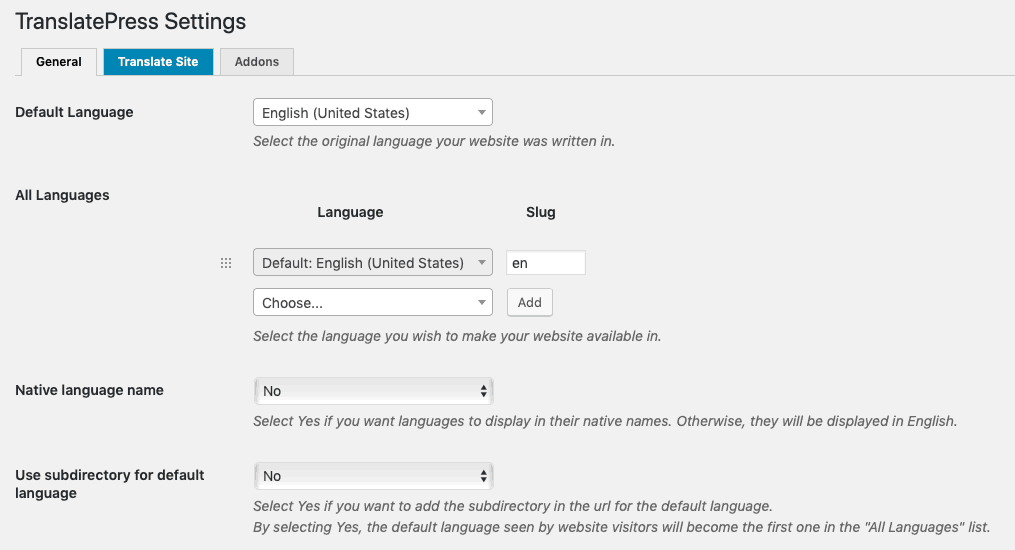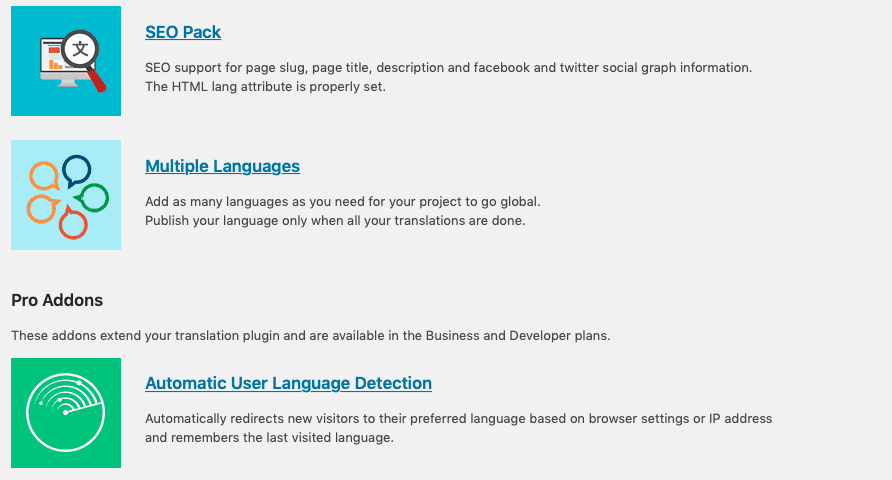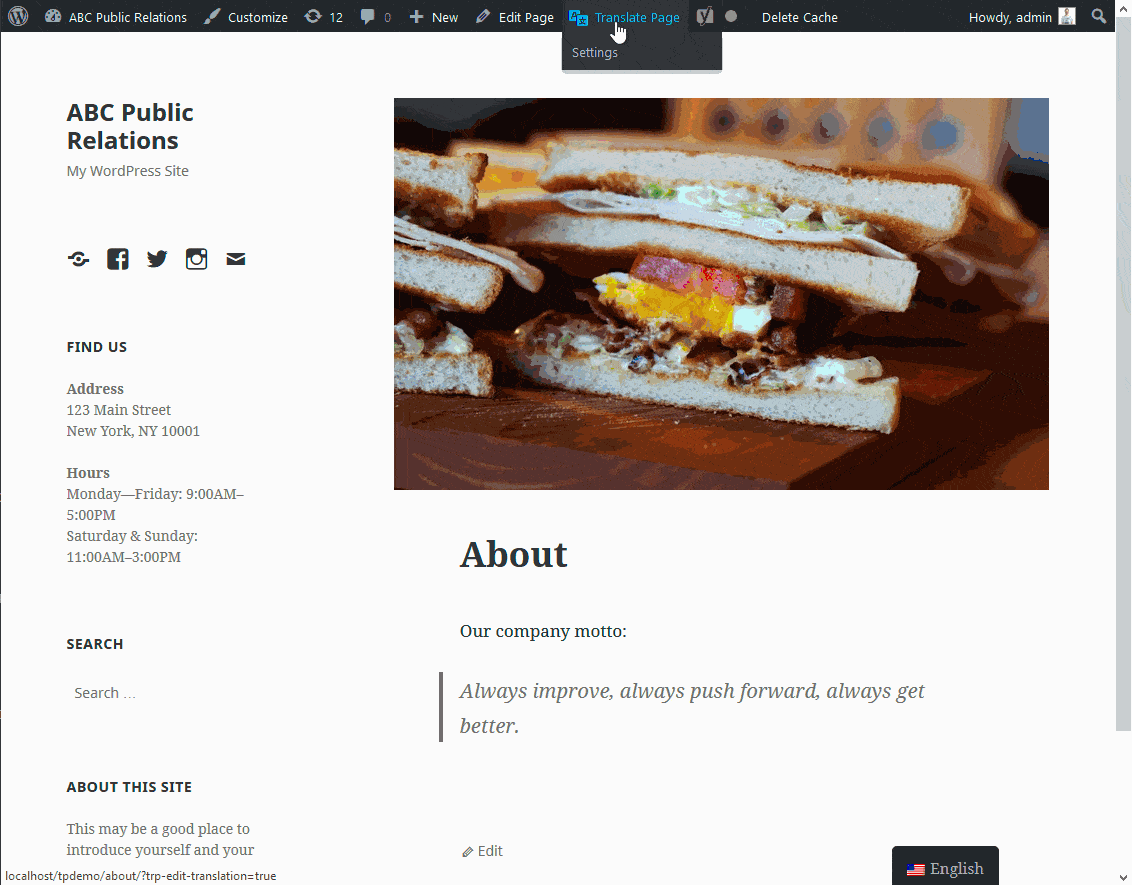If you have a service or product for which you want to reach as many audiences as possible, you may look to serve it in as many languages as possible. Makes sense, right? This powerful WordPress Translation Plugin can help you with that.
TranslatePress allows you to translate your web pages easily in many different languages which can be served to the user according to their preferences. So if your users speak a different language than your primary blog language, they can still benefit from your services. Because of that, it does not surprise that over the course of just 12 months, TranslatePress grew to over 20,000 active installs on wordpress.org and closed last month with over 4500$ in revenue from its premium versions.
TranslatePress WordPress Plugin
It integrates well with WordPress, and all the conversion happens right from the interface similar to WordPress Customizer.
One of the best things is that it does not work on the backend – it translates the front end page! This will make sure that all of your shortcodes & tags are already converted, and you can easily convert the complete text in the different language.
Many of the other translate plugins might not have support for some components, but because TranslatePress works on the front end, it can translate everything you will need. It doesn’t matter if your content is generated by the getText function or dynamically, it won’t miss on a single thing. Because of that, TranslatePress is one of the most comprehensive translation plugins for WordPress.
You also get easy integration with Google Translate Service to automatically translate your pages. You just need to add the API key, and the service will be activated for you.
TranslatePress Settings
Once you install the WordPress Plugin, you can enable Google Translate connection in the settings.

TranslatePress Settings Page
There are some basic settings like default language for the site or which language should be supported for translation. You can also define the slug for each language which will be used to define the page URL for that language.
You can also define how the language should display on the front end. Should they use the short name with flags or only the flags, etc.?

TranslatePress Language Switcher Settings
The Language Switcher gives complete control over how it will be displayed to your readers. You can add it to any menu or display it using a shortcode on your pages.
The shortcode is a good solution in case you want to include the button in the page template. Just edit the page template of your theme and add the shortcode at the correct location. You can also use the shortcode to add the language Switcher to your Widgets.
Add-ons
Another good thing is the Addons which can expand the functionality of TranslatePress. There are multiple Addons which you can download and install like SEO Pack or Automatic User Language Detection.

TranslatePress Add-ons Section
These packs make sure that you can customize other parts of your site as well. For example, SEO Pack allows you to translate your SEO meta tags like a slug, page title, Facebook social tags, etc. It also sets the HTML lang attribute to make sure search engines can easily understand your page.
Another add-on we would like to put your attention to is Automatic User Language Detection. It allows you to detect the user language based on the IP Address or browser settings. You can direct the user to a specific language based on their preference.
There are some other add-ons which you can get like Translator Account to allow non-admin users of your site to do the translations as well.
Translation Process
Once you have done all the basic settings, you can click on “Translate Site” and start the translation work. Everything will be done from the front end using an interface similar to the Customizer, so even complete beginners who are not yet familiar to WordPress can work on the translations.

TranslatePress front-end translation in action
You can just select the strings which displayed on the screen and translate them easily. If you have enabled Google Translate, the strings will be translated automatically. You can edit the translations by selecting the language in the dropdown and the string which you want to translate.
Just edit the translation, and it will be saved. You can work across many different languages and translate your pages. If you don’t know the languages, you can leave everything as it is, but we would strongly suggest having a manual look. Sometimes automatic translations do not replicate the same emotions as in native language. So you need to make sure the conversions are still carrying the same message as the original and manual check will help you achieve that.
E-Commerce Support
It not only supports the normal website pages, but TranslatePress also integrates well with all your e-commerce store options. So if you use WooCommerce, you can easily translate those pages to display your products in different languages.
This will help in increasing the reach of your online store and getting some additional sales.
The TranslatePress plugin not only helps in e-commerce but can handle complex WordPress Plugins and custom post types. So it doesn’t matter how complex and dynamic page generation process you have, you can still use this plugin to convert it into a different language.
Page Loading Speed
Once you complete the translation, everything will be saved at the local database. This will make sure there is no live conversion happening which can increase the loading time for your site.
Loading time is one of the factors in the SEO, so you need to make sure it will have minimal impact on your site. Because of the local database storage, TranslatePress only adds minimal time on the page loading time which is practically insignificant. For more information, please check the comparison of WordPress translate plugins loading time.
Wrapping up
TranslatePress is one of the best plugins which can help in creating multilingual pages. It will get you new readership and increase the reach of your website. So go ahead and create pages with proper translation and reach new people that haven’t had a chance to get to your content because of the language barrier.